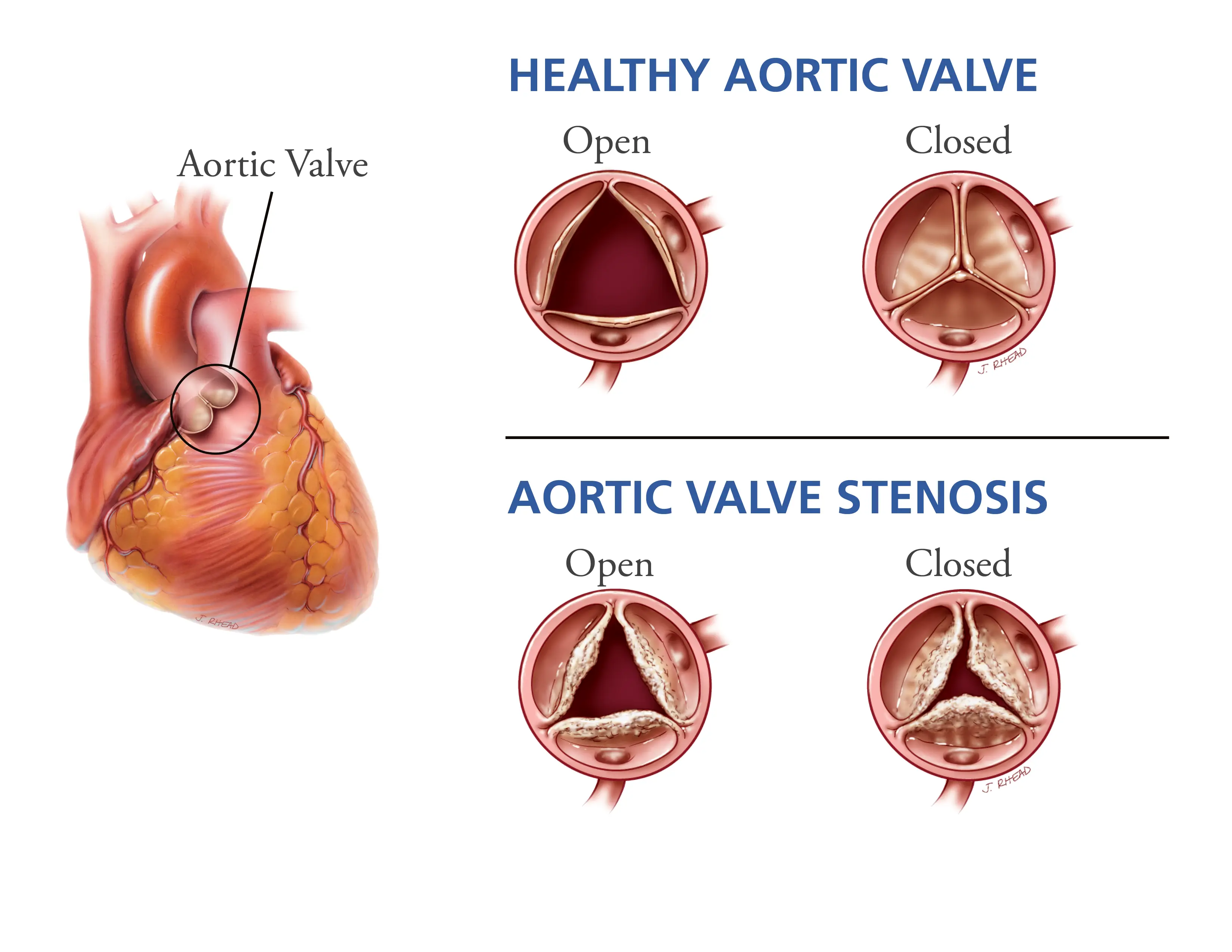Can Aortic Stenosis be Cured?
Sometimes
Treatment aims to alleviate symptoms and prevent complications; outcomes depend on the severity of stenosis and response to treatment

What is Aortic Stenosis?
Aortic stenosis is a heart valve disorder characterized by the narrowing of the aortic valve opening, restricting blood flow from the heart. Symptoms may include chest pain and fainting. Treatment may involve medication or surgical valve replacement.

Clinical Aspects

Characteristics
Narrowing of the aortic valve, restricting blood flow from the heart

Symptoms
Chest pain, shortness of breath, fatigue

Diagnosis
Echocardiography, imaging studies, assessment of symptoms and heart function

Prognosis
Variable, depends on the severity of stenosis

Complications
Heart failure, arrhythmias, complications affecting multiple organs
Etiology and Treatment

Causes
Congenital defects, aging, calcium deposits

Treatments
Medications, valve repair or replacement surgery

Prevention
Medications, valve repair or replacement surgery
Public Health and Patient Perspectives

Epidemiology
Narrowing of the aortic valve, restricting blood flow from the heart

Patient Perspectives
Monitoring and management, surgical intervention as needed
Remember, the information provided here is intended for general knowledge purposes and may not apply to every individual case. To ensure you have accurate information relevant to your specific situation, always consult with a healthcare professional.
Share: